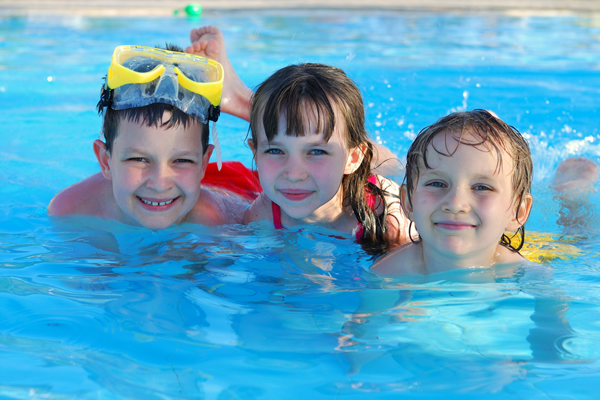Whether you are taking your kids to a pool, a river or the ocean, it is crucial that you exercise caution and use good judgment about water safety. Drowning is a very important cause of injury-related death among young children. Although young children are particularly at risk, even older kids who know how to swim can experience difficulty, or even drown.
When you’re out with your kids having fun in the water, safety issues may not be at the top of your mind. However, in order to keep your kids safe, you need to follow some basic precautions. By adopting proper water safety practices, you can help protect your family from serious, even deadly, accidents and injuries.
Ensure Adult Supervision
Though you may feel your kids are old enough to monitor their own activities in the water, don’t let your guard down. Whenever children are near water, responsible adults should closely supervise them at all times.
When watching children – whether near or around a pool, river, ocean, or even a bathtub – avoid multitasking. Do not engage in distracting activities that can cause you to lose your focus on watching your children, such as making phone calls, reading, playing games with other adults, or watching TV.
Wear Life Jackets
Life jackets aren’t just for boating. When your kids are around natural bodies of water – such as rivers or the ocean – consider if life jackets should be mandatory. Even if your kids are excellent swimmers, it’s possible for rip tides and currents to overpower them. Children who are weaker swimmers may need to wear a life jacket when they are in or near swimming pools as well.
Use Pool Fences
Swimming pools, however small, inside houses can be as dangerous as the ocean when it comes to small children. Even if parents are nearby, children are at risk for drowning if proper precautions aren’t taken.
If you have a swimming pool in your house, it is recommended to separate your house from the pool by installing an “isolation fence.” This fence should be four-sided to completely encompass the pool, and should include gates that self-close and self-latch. Isolation fences can help keep children away from the pool area when they’re in the surroundings playing.
Know the Basics
Sometime’s prevention isn’t enough, and accidents happen. It is recommended that all parents learn basic life-saving skills. In addition to knowing how to swim (or at least how to float and move through the water), adults with young children should also learn how to administer cardiopulmonary resuscitation (CPR). It isn’t hard to find a basic CPR course. There are many hospitals and NGOs offering the basic CPR courses to interested individuals.
CPR helps to save lives by keeping a flow of oxygenated blood to vital organs. When the heart stops, a person can die in a matter of minutes. If you’re trained in CPR, and administer your skills promptly, you may be able to help save a life.
Avoid Disaster: Use Caution
According to an estimate, India has the highest number of child deaths due to drowning. One of the most tragic aspects of these deaths is that they are completely avoidable. Water injuries and deaths can be prevented, as long as adults remain mindful of children at play. It’s important not to become careless around water, even when your kids are splashing and having fun. By learning the best practices for water safety at pools, rivers, and ocean beaches, you can help keep your kids safe and healthy.
Source: healthline


